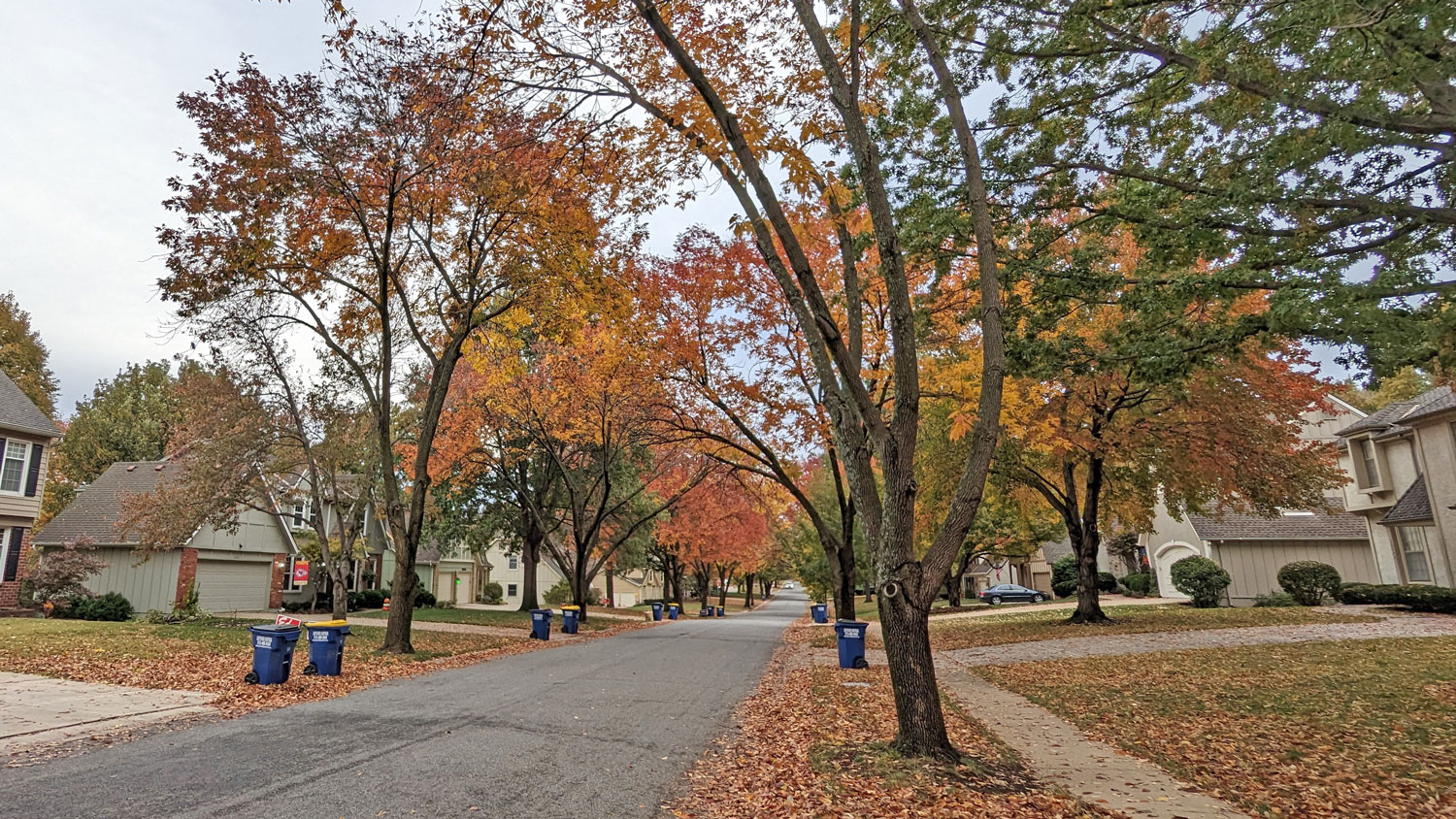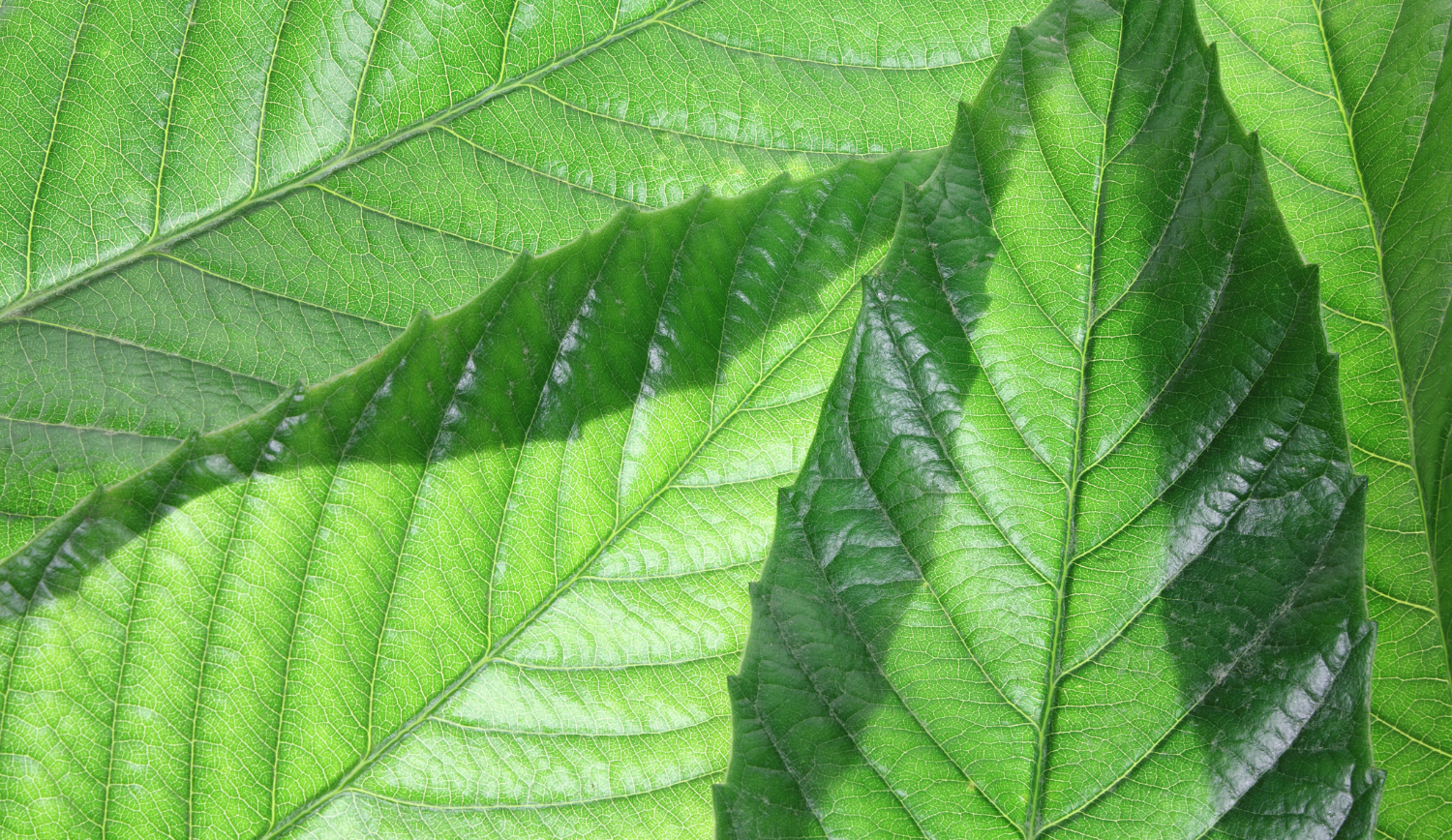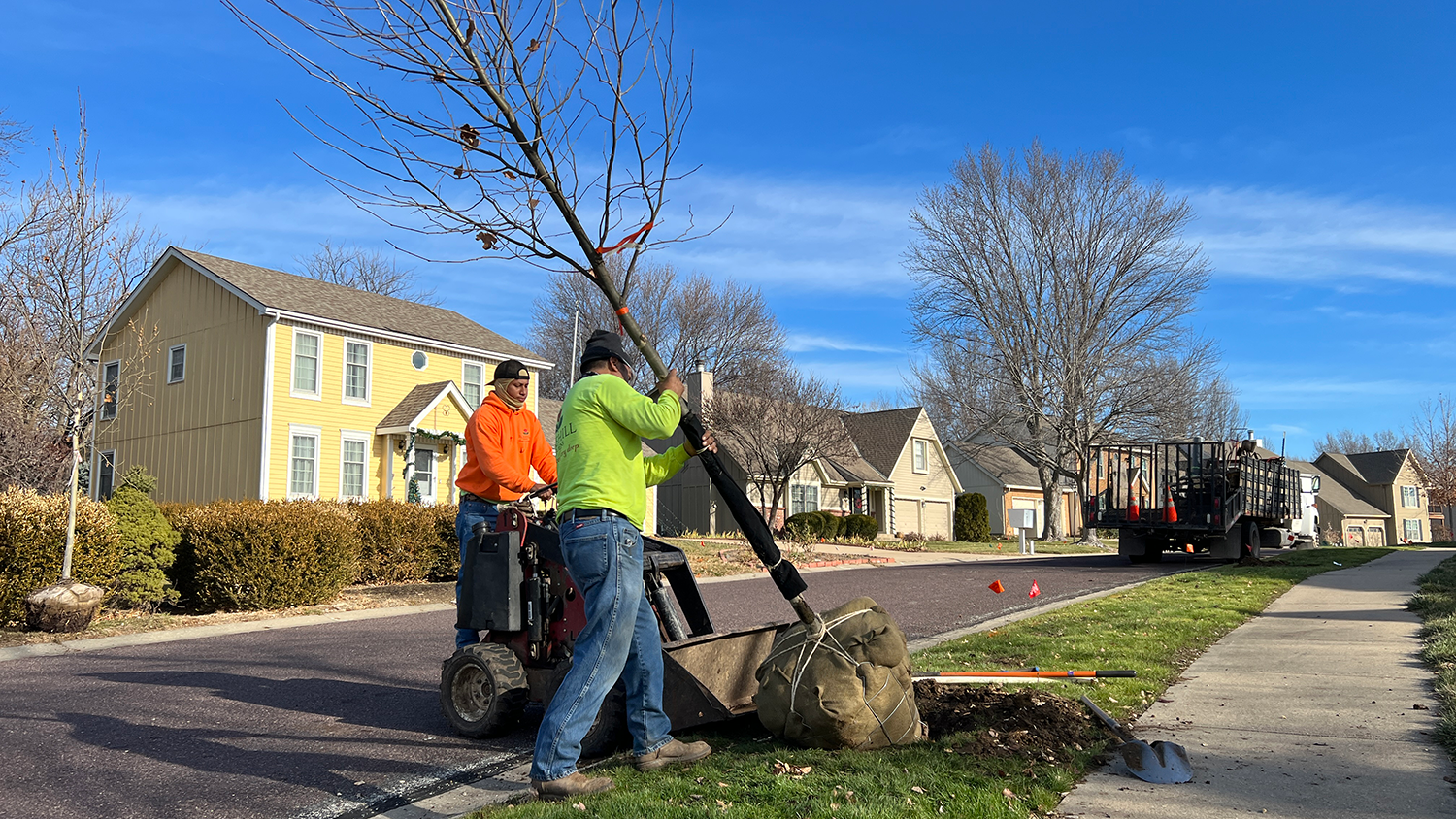Ash Tree Removal Program
Ash Tree Removal Program
In 2014, approximately 11,000 ash street trees made up nearly a quarter of the city’s street tree canopy.
The emerald ash borer, an invasive beetle that feeds specifically on ash species, will kill the vast majority of those trees.
Before 2023, City forestry staff had been removing ash street trees upon request. Staff has removed approximately 3,000 dead or dying ash trees at the rate of about 500 trees per year. Without a large-scale removal program, it would take the City more than 15 years to remove all the remaining ash street trees that will ultimately die.
Overland Park began a proactive, large-scale ash street tree removal and replacement program in 2023.

Removal Areas
In 2023 and 2024, a City contractor removed ash street trees most affected by the emerald ash borer, an invasive pest devastating ash populations. The City is continuing these efforts, and will remove more than 8,000 ash street trees by the end of 2026.
See a map of neighborhoods that will receive ash street tree removal.
In all, the City will remove more than 2,400 ash trees from these neighborhoods. With the completion of this contract, Wards 1, 2 and 3 will be clear of infested ash trees.

Removal Process
The City’s contractor, Arbor Masters, will perform removal services for the areas listed above. Removals will be conducted seven days a week, weather permitting, until the project is complete.
There will be one crew per neighborhood, with several crews working simultaneously across the city. Crews will close one side of the street at a time in order to minimize disruption to residents and neighborhood traffic.
A local composting company will dispose of the ash tree debris. It will likely be repurposed as mulch. Once ash street trees have been removed in the neighborhood, crews will return to grind down the stumps, backfill with topsoil, and top with grass seed to complete the removal services for the area.
If you live in one of the neighborhoods listed above and would like your ash tree removed, there is no need to contact the City to report your tree.
Notification
When it is approaching time for neighborhoods to receive removal service, the contractor will post signs at the entrance to the neighborhood.
Then, one week to ten days in advance of the actual tree removal, the contractor will notify residents with door hangers.

Replanting Street Trees
The City will replant one tree for every ash street tree removed in this program.
In order to promote growth, new trees must be placed several feet away from the previous tree. If there is limited space in the public right-of-way at the residential location, the City will plant a replacement tree at another public space such as a park or along trails.
Replacement Tree Species
The City forester will choose replacement tree species from the approved street tree list in order to diversify the City’s overall tree canopy.
In most cases where ash trees are being clear cut, you and your closest neighbors will receive the same tree species, but neighbors a few streets over will receive a different species of replacement street tree. This provides uniformity to streets but diversity to neighborhoods and the City’s overall tree canopy.
Planting efforts began in the fall of 2023, and will continue yearly until the project’s completion in 2029.
Emerald Ash Borer
The emerald ash borer has killed tens of millions of ash trees in the United States.
Adult emerald ash borers deposit their eggs in the crevices of ash bark. The eggs hatch and larvae feed on the tree’s inner bark. This disrupts the flow of water and nutrients to the rest of the tree, effectively killing the tree. The adult borers feed on the foliage of the tree, and then lay their eggs in the bark, perpetuating the cycle that damages ash trees.
Emerald ash borer was first found in Overland Park in 2014.
Frequently Asked Questions
- Why is the City “clear cutting” ash trees?
- What is the emerald ash borer?
- If I’ve been treating my ash street tree, are you still going to cut it down?
- How do I know if my dying ash tree is a street tree?
- How did you decide which neighborhoods or areas will get removal and replacement?
- My neighborhood is not on the list but has dead or dying ash street trees. Can you remove them?
- Who is doing the work? Is it City forestry crews or a contractor?
- How are you ensuring the quality of the contractor's work?
- When will this work start and where are you starting?
- How will I know when you’re going to come cut down my tree?
- I have a dead or dying tree in my backyard/on my property. Will you come take it down?
- With what species of trees will you be replacing ash trees?
- When will you replant the trees you’re removing?
- Will I be able to choose what kind of tree gets planted in place of my ash tree?
- Who is responsible for caring for my new tree?
- What if I don’t want a replacement tree?
- My neighbors don’t have ash street trees, but I do. Can you still come take mine down?
- How much does this program cost?
- What will you do with the removed trees?
- Why didn’t I get a replacement tree?
